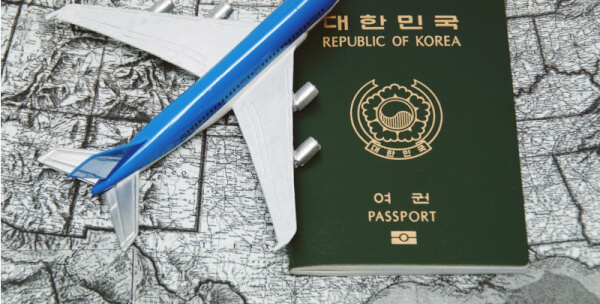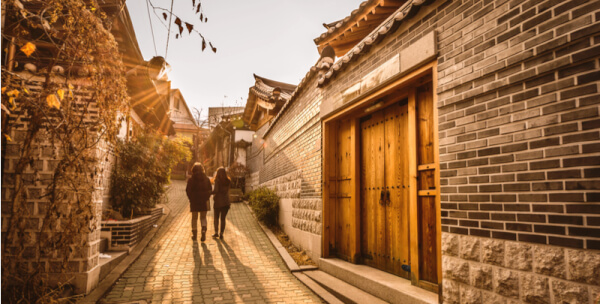Bank and public holidays in South Korea: 2017-2018 guide
South Korea is known by many in the international community to be a friendly, welcoming country that loves a good party. The same goes for holidays in South...

One important decision, if you’re moving to South Korea with family, is how to ensure that your children receive the best possible education. Luckily, South Korea has a famously strong education system, and has delivered results well above the OECD averages across maths, science and reading for over a decade.
The education on offer for older children and teens, is demanding, with high pressure exams for students wanting to progress to university. However, the academic outcomes are undeniably good, and these days the South Korean government has a focus on encouraging students to be more creative, recognising strength beyond traditional exam subjects.
If you’re considering your options, you can compare the standard of education in South Korea with that available in your home country, with the PISA assessment framework from the OECD.
Whether you’ve already got your South Korean work visa, and have your move fully planned - or are just starting to think about life overseas, it helps to know a little about the education options in South Korea.
Here is a quick guide to get you started.
Pre-school (which is optional), is offered from age three, in South Korea, with compulsory schooling from the age of five or six. After primary school, children move onto middle school, known as Jung Haggyo, and then High School (Godeung Haggyo). Different areas of the country have slightly different systems, including the processes for allocating spots, which might be by lottery (especially in large, densely populated cities), or through selective testing.
| Pre-school | Optional for ages 3 - 6Fees are payable, although there's government support for parents of low income families |
|---|---|
| Chodeung Haggyo(Primary School) | Compulsory from age 6 - 12 for all childrenIn some cases, children are admitted age 5Education at primary level is free |
| Jung Haggyo(Middle School) | Compulsory for children aged 12 - 15Free of charge |
| Godeung Haggyo(Secondary School) | Not compulsory (but highly attended) from age 15 - 18, in specialist or vocational schoolsFees are charged but usually cover lunch as well as tuition |
Pre-school in South Korea isn't compulsory, so if you want your child to attend you have to enrol directly with the school you have chosen. Places are available for children aged between 3 and 5, with fees payable. The cost of pre-school varies enormously, and the best schools are oversubscribed. There are both government run and private options, with many private schools teaching in English for families who want their children to have a head start in the language.
From the age of five or six (depending on space and a child’s ability), it’s compulsory to attend primary school in South Korea. This stage of schooling is provided free of charge. If you have a child of this age, registered with authorities, you’ll get a letter automatically telling you which school your child should attend. You’ll receive this letter even if you're homeschooling, or have your child at a private school, and you’ll have to contact the authorities to explain the situation if you don’t intend to take up the place offered.
Primary school lasts for 6 grades, and the curriculum is broad, covering basic skills, physical education and languages. From the third grade, English is taught an hour or two a week for all students. To attend school, your child must have had several vaccinations, which are offered free at medical centres. Teachers can check medical records online to make sure that this has been done.
Wrap around care is usually on offer from early in the morning until late in the evening. Additional before and after school care is charged for, although some families are entitled to free support if they're lower earners and both parents work.
Middle school begins when students are around 12 years old, and lasts for three years. Middle school is free of charge in South Korea, and covers both compulsory and elective subjects.
The curriculum at this stage remains broad, covering math, Korean and English languages, social studies, science, art and PE. There are also ‘moral education’ classes.
At this stage schooling starts to intensify, with more pressure on children to get good grades. In areas where entry to high school is done on an academic basis, the pressure is on to make sure that they can gain entry to one of the more prestigious schools. Students are streamed according to their ability in many subjects, and competition can be fierce.
For the purpose of entry exams into higher secondary education, the student’s whole middle school career is considered. This takes the pressure off the final exams somewhat, but still requirs children to get consistently high grades. No surprise then, that at this stage many students start to have additional tuition outside of class.
There are several different options for secondary education in South Korea. Students can choose to go to a school which specialises in foreign language, arts or music, for example, although they'll face stiff competition and have to take tests to enrol. Otherwise, there are also general schools, in which admission is arranged according to your home address.
At this stage, education must be paid for by parents - although there are some concessions for lower earning families. Included in the cost of tuition are school meals. This level of education, from around age 15 to 18, isn't considered compulsory in South Korea, although the take up is high.
If students want to go to university, they must take the College Scholastic Ability Test (CSAT), which is notoriously difficult. It’s typical to take extra tuition or go to a ‘cram school’ in order to ensure good grades at this stage.
The school year in the Korean state system is arranged into semesters, although the exact dates vary slightly according to the specific school preferences. The first semester typically runs from March through to mid July, with a summer vacation to follow. Then from the end of August you have the second semester, which runs until a break in the middle of February. Schools close for public holidays, and usually have a ‘half term’ break mid way through each semester.
It’s worth noting that this calendar applies to state schools only - in private and international schools the western standard calendar, with a long summer break and several weeks vacation at Christmas, is far more likely to be adopted.
There are fees charged for pre-school and secondary education under the state system, as well as additional costs for uniforms, transport and school materials. If you don't choose the state system and decide to find a private international school, the costs are also high.
South Korea has some 45 international schools, mainly in the major cities, teaching in English and other major world languages, and often using either the International Baccalaureate syllabus, or a variant of the United States standard curriculum. International schools are generally of a high standard, and therefore typically competitive, with testing and interviews to secure admission. You can expect the fees to vary widely depending on the specific school and the programme they offer. Fees of anything from USD 15,000 to USD 30,000 a year aren't uncommon.
Whichever route you decide is best for your family, there will be costs involved, and you don’t want to pay more than you have too. If you’re funding your child’s education from your account back home, use Transferwise to get the real exchange rate and cut out expensive international bank transfer fees.
*Please see terms of use and product availability for your region or visit Wise fees and pricing for the most up to date pricing and fee information.
This publication is provided for general information purposes and does not constitute legal, tax or other professional advice from Wise Payments Limited or its subsidiaries and its affiliates, and it is not intended as a substitute for obtaining advice from a financial advisor or any other professional.
We make no representations, warranties or guarantees, whether expressed or implied, that the content in the publication is accurate, complete or up to date.

South Korea is known by many in the international community to be a friendly, welcoming country that loves a good party. The same goes for holidays in South...

South Korea is a popular destination for expats looking to relocate abroad. It's a major technology hub and has thriving cities like Seoul. There are many job...

South Korea has had an industrial boom in the last decade, making their economy bigger, more stable and more attractive to foreigners. What was once a country...

As a senior, you must decide where you’re going to retire. South Korea is an exciting and modern option that many Western retirees consider. Whether you’re a...

Seoul has a large expat community drawn from all around the world, thanks to the large numbers of global businesses based there. IBM, Google and Toyota, for...

The excellent food, public transportation, internet infrastructure and safe culture have constantly drawn expats to South Korea. Now known widely as one of...